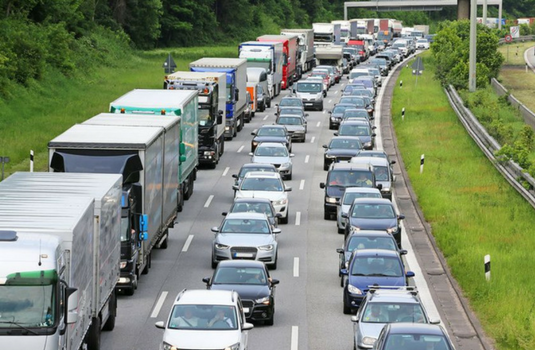Generic transport mechanisms for molecular traffic in cellular protrusions
 Cellular protrusions as filopodia or stereocilia are finger-like extensions of a cell projecting into the surrounding environment. Their shape is maintained by actin filaments that are cross-linked into more rigid bundles. Protrusions have an important role in different contexts ranging from cell migration and wound healing to signal transduction. For the functioning of the protrusions proteins have to be transported to the protrusion tips. Molecular motors as myosins can fulfill this task by converting chemical energy from ATP hydrolysis into directed movement along those actin filaments, pulling the proteins as cargo behind them. Furthermore, instead of being transported directionally along the actin filaments, the proteins could also reach the tip by diffusing in the cytosol that is present everywhere in the cell.
Cellular protrusions as filopodia or stereocilia are finger-like extensions of a cell projecting into the surrounding environment. Their shape is maintained by actin filaments that are cross-linked into more rigid bundles. Protrusions have an important role in different contexts ranging from cell migration and wound healing to signal transduction. For the functioning of the protrusions proteins have to be transported to the protrusion tips. Molecular motors as myosins can fulfill this task by converting chemical energy from ATP hydrolysis into directed movement along those actin filaments, pulling the proteins as cargo behind them. Furthermore, instead of being transported directionally along the actin filaments, the proteins could also reach the tip by diffusing in the cytosol that is present everywhere in the cell.
In our study, we use a conceptual mathematical model to examine the interplay between active, directed transport and diffusive motion in a half-closed geometry that is motivated by the finger-like shape of the protrusions: they are connected to the cell body at one end, the base, and surrounded by cell membrane everywhere else. The combination of active transport and diffusive motion is intrinsically interesting to study as the former is an active, non-equilibrium process that leads to currents that oppose the no-flux boundary condition from the closure at the tip and that has to be contrasted with the diffusive, equilibrium motion.
Our results suggest an intriguing task-sharing mechanism: While naively, one would assume that transport of the proteins to the tip should be much faster by directed motion than by diffusion in the cytoplasm, directed transport is strongly suppressed in our model and transport to the tip is actually facilitated by diffusion. This reduction of the active current on the filament is due to steric hindrance between the motors that cannot penetrate or overtake each other. As a result, there are very high correlations between the motors and they feel like in a traffic jam: their speed is reduced substantially compared to freely moving motors. We can analytically predict those correlations and the corresponding active current by deriving an exact relation between the correlations and the motor densities and by using a method called domain wall theory. Mean-field theory which is typically used to approach similar systems cannot capture essential properties and our model demonstrates that correlations might be crucial also in more elaborate systems.
From a biological point of view, the congestion of motors at the tip of the protrusion might actually be beneficial if the pile-ups are not too long: It would prolong the residence time of the proteins at the tip and could possibly facilitate their tasks there. Moreover, we find that in order to achieve accumulation of proteins at the tip but simultaneously to avoid very large traffic jams the unbinding rate of the motors at the filament tip should be much larger than the binding and unbinding rates in the inner part of the filament.
On a broader perspective, our findings might help to understand the interplay between active and passive transport also in more elaborate models and to illustrate the role of correlations also in biological systems.

